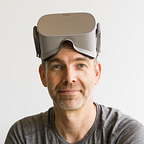The Science and Necessity of Talking Mimes
This is in an excerpt from Talking Mimes Talks to Idealog, which is the raw interview for the Idealog article White-Mirror-Episode-Two-Mindedness.
7. How does your technology augment and facilitate this impact?
In a better world, people, particularly people in power, would just listen directly to people with the lived experience. They would listen and act on the received insights and instructions about how to make the world universally accessible, and stop oppressing people by default with their unthinking ableism.
In this worse version of the world, the one we live in, where few people listen and fewer act, we need to employ tactics to capture attention and deliver messages that stick and drive change.
Maintaining attention is hard. Harder still in the age of digital devices. Research suggests we average around 50% attention in a meeting or learning situation. The other half is “monkey grooming cat friend” videos, and day dreaming about marrying your co-worker [see Talking Mimes Talks to Idealog Q6]. Virtual reality, though, forces you to attend — everywhere you look and listen can be designed to deliver the message, and your digital devices can be silenced and put out of reach in actual reality.
You can pack so many teachable moments into a VR experience. And even the most egocentric of subjects can have their empathy supercharged when they virtually embody another. Experiential learning is richer and stickier than traditional education methods. Or rather it can be. If it’s done right. Which it often isn’t.
Some of the research [Talking Mime’s research psychologist] Sarv unearthed indicated that while warmth and other measures of empathy might be increased by disability simulation, so too can confusion, embarrassment, anxiety and helplessness. Worst of all, stereotypes can even be reinforced, attitudes about interacting remain unchanged, or avoidance behaviour actually increased. It looked grim. There was also encouraging research around VR assisted empathy and education, but it was imperative that we did everything in our power to meet the issues raised by disability activists and commentators, and the scientific literature.
A big issue with a lot of disability simulation is it’s focus purely on the “impairment”. You can’t give someone a sense of what it’s like to be a person with a disability, if all you’re showing them is disability. So Talking Mimes focuses on the person, a whole human being. The best way to do that is through narrative. We best understand the world, and each other, through stories. And the most powerful stories are those based in truth. So that’s what Talking Mimes does, immerse people in a whole human through a first-person story based on true experiences.
By itself, though, even a well-crafted experience still runs the risk of maintaining, strengthening, or even facilitating biases and myth. We could see that play out for the occasional participant who would come out with things to the effective of “thank god it’s not me” or “I just wanted to die”. Because they’re thrust into a completely different mode of being, and they’re only there for 12 minutes, they only get the shock of change, and don’t get to experience the extraordinary adjustments and mechanisms people with disabilities employ and develop over time. Or those fascinating adaptive components of the human condition like the “hedonic treadmill”.
To counter this, you have to have facilitated conversations and activities to supplement and expand on the experience. So Sarv developed the Talking Mimes companion workshops, using an empirically validated experiential learning framework, to do just that. Having delivered them personally and seen how engaged, and insight-generating, participants are through it — and collecting data to supplement anecdotal observations — it seems to do the job good and proper.
